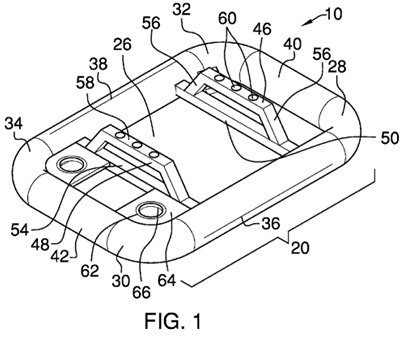Considering a trade secret misappropriation claim involving a business pitch that was not subject to a non-disclosure agreement (NDA), the US Court of Appeals for the Sixth Circuit affirmed a district court’s summary judgment grant for the accused party, finding that it had not acquired the information through a confidential relationship. Novus Grp., LLC v. Prudential Fin., Inc., Case No. 22-3736 (6th Cir. July 17, 2023) (Sutton, Boggs, Readler, JJ.)
Eric Seyboldt and Mark McCanney founded Novus Group to launch their financial product called the Transitions Beneficiary Income Rider. The pair developed the Rider to address the diminishing availability of retirement income vehicles—such as pension plans or 401k profit-sharing plans—for modern workers. In operation, the Rider guaranteed that, following a policyholder’s death, an insurance company would pay pension-style death-benefit proceeds to non-spouse beneficiaries throughout their lifetimes.
Novus partnered with financial product developers Genesis and Annexus to ensure that the Rider was feasible and to assist with a pitch to Novus’s target customer, Nationwide. These relationships were governed by two contracts with confidentiality provisions: the Genesis-Novus and Annexus-Novus contracts. Before Novus was formed, Genesis and Annexus had also created a joint organization, AnnGen, which had its own confidentiality agreement with Nationwide concerning AnnGen’s New Heights product (AnnGen-Nationwide contract). Prior to Novus’s pitch, Nationwide refused to sign an NDA and warned that Novus should “not disclose any confidential information.” Despite the lack of an NDA, Novus and Annexus pitched the Rider concept to Nationwide, which elected not to pursue the product.
After the unsuccessful pitch, two Nationwide employees who allegedly had access to information concerning Novus’s Rider product left Nationwide for Prudential. Shortly thereafter, Prudential launched Legacy Protection Plus, a death-benefit rider that was similar to Novus’s Rider product. Novus believed Prudential stole its Rider concept and sued Prudential for trade secret misappropriation. Prudential moved for summary judgment. The district court granted the motion. Novus appealed.
On appeal, the Sixth Circuit assumed the existence of a trade secret and its unauthorized use, focusing solely on whether Prudential had acquired Novus’s trade secret as a result of a confidential relationship or through improper means. The Court noted that Novus had not raised a theory of “improper means” in district court and thus had waived that argument.
The Sixth Circuit also found that the two Nationwide employees did not have a duty to Novus to maintain its information in the utmost secrecy. Novus argued on appeal that such a duty arose from the web of agreements among Annexus, Genesis, Novus, AnnGen and Nationwide. However, Nationwide was not a party to the Annexus-Novus and Genesis-Novus contracts and was not bound by them. Further, Novus was not a signatory to or third-party beneficiary of the AnnGen-Nationwide contract, which narrowly covered the New Heights product developed by AnnGen, rather than Novus’s Rider. Instead of creating a duty of confidentiality, these contracts demonstrated that Novus knew how to create a confidential relationship, yet declined to form one with Nationwide, which had explicitly refused to sign an NDA. The [...]
Continue Reading
read more

 Subscribe
Subscribe



